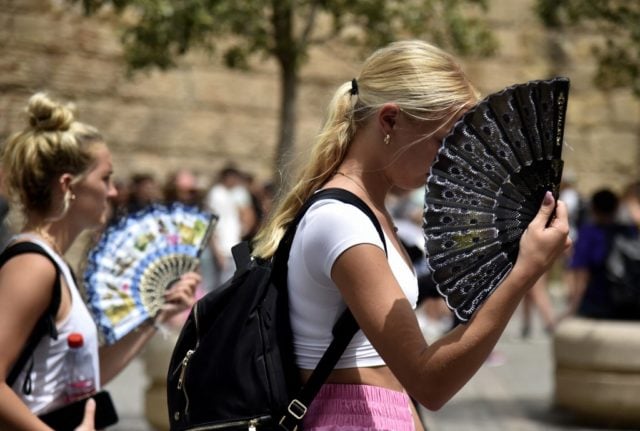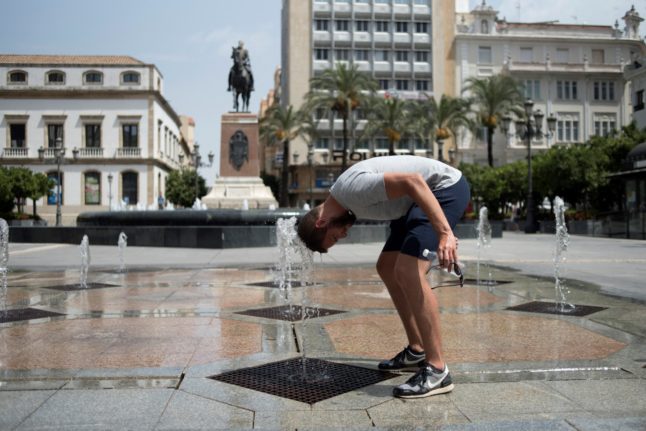The region’s second heat this summer is forecast to hit southern Spain with some of the harshest temperatures.
“For Thursday, we expect it to be the hottest day of this heatwave,” said Spain’s state meteorological agency AEMET.
The valleys around three major rivers — the Guadiana, Guadalquivir and Tagus — will experience temperatures of 40 degrees Celsius (104 Fahrenheit), it said.
Most of Spain went on high alert Wednesday, and AEMET said some regions were “suffocating” — especially worst-affected Andalusia in the south, Extremadura in the southwest and Galicia in the northwest.
The health ministry told people to drink plenty of fluids, wear light clothes and stay in the shade or air-conditioning.
The Andalusian city of Almonte saw the mercury hit 45.6 degrees Celsius at 5:30 pm (1530 GMT) on Wednesday.
Several other southern cities such as Seville and Cordoba recorded temperatures above 44C.
In western Spain near the border with Portugal, forest fires have already razed at least 3,500 hectares (8,600 acres).
Between January 1 and July 3, more than 70,300 hectares of forest went up in smoke in Spain, the government said — almost double the average of the past 10 years.
‘The end of the world’
Heatwaves have become more frequent due to climate change, scientists say, the previous ones in France, Portugal and Spain having taken place only last month.
Last week, an avalanche triggered by the collapse of the largest glacier in the Italian Alps — due to unusually warm temperatures — killed 11 people.
In Greece, a helicopter helping to fight a forest blaze on the island of Samos on Wednesday crashed into the Aegean Sea, said the coastguard. Two crew members were killed.
And in Portugal — on alert for wildfires for days — one person had died in a forest blaze, authorities said, after a body was found in a burned area in the northern region of Aveiro.
Around 60 others have been injured, over 700 people evacuated and nearly 30 homes destroyed or damaged.
Over 2,000 firefighters were battling four major fires in Portugal on Thursday morning.
Portuguese Prime Minister Antonio Costa warned that Thursday would be the “most serious” day of the heat wave because temperatures were expected to rise and winds were stronger.
“Today is the day where we have to be the most careful,” he said.
At Leiria, central Portugal, locals fought to save their village as fires closed in on them.
“Everything burned yesterday except the houses, because the people are very brave and defended them themselves,” said 77-year-old farmer Adelino Rodrigues.
“The firefighters arrived much later.” “It looked like the end of the world,” he said.
It brought back memories of the devastating wildfires in 2017, which claimed the lives of more than 100 people in Portugal.



 Please whitelist us to continue reading.
Please whitelist us to continue reading.
Member comments